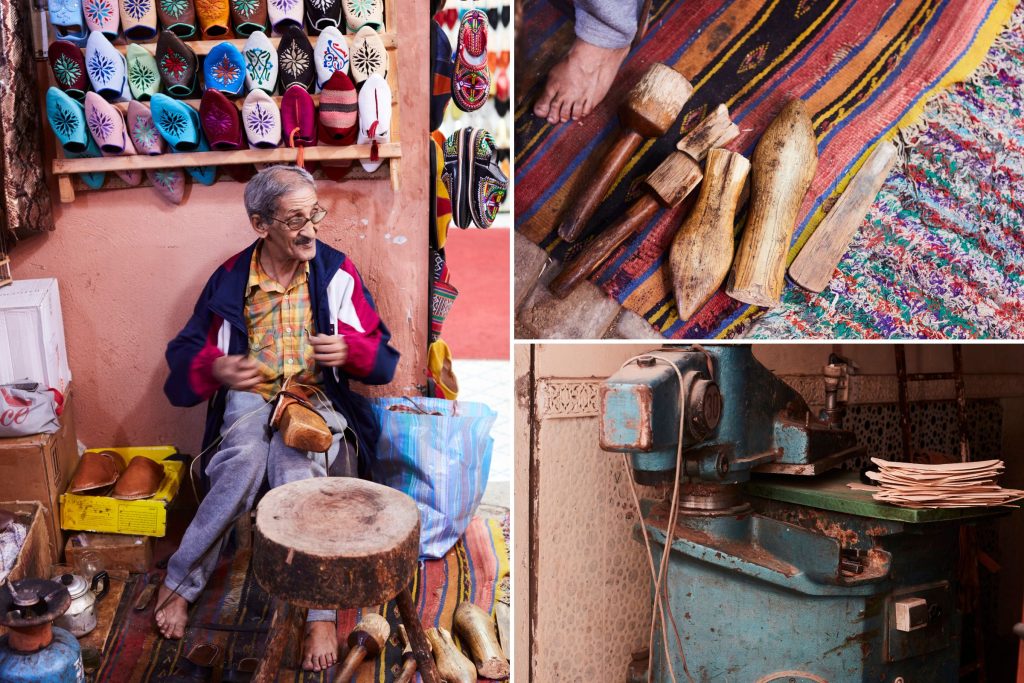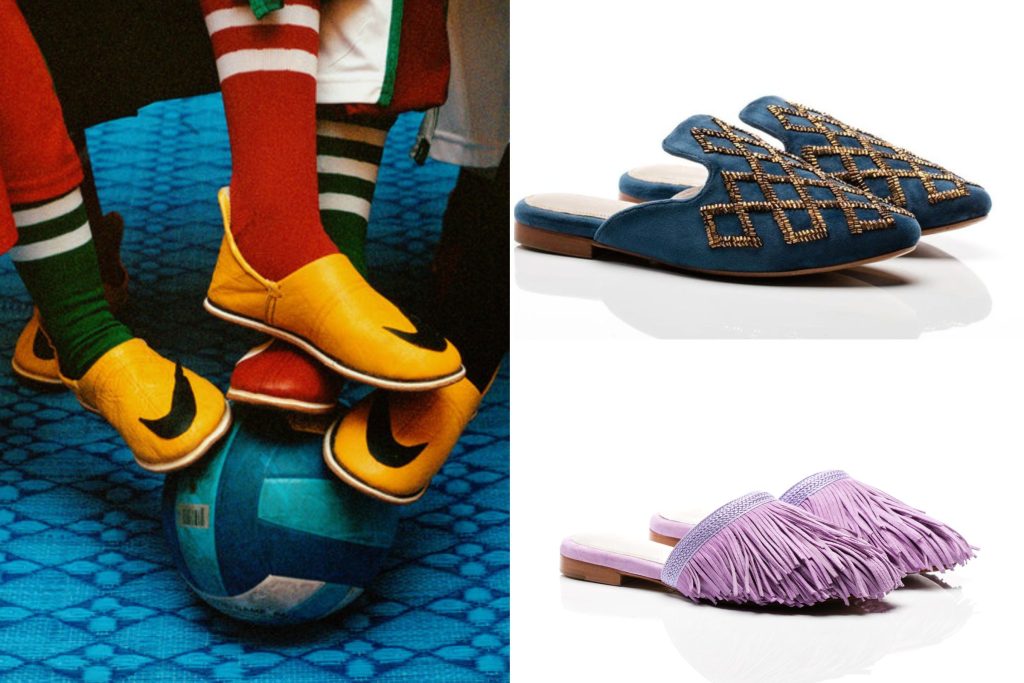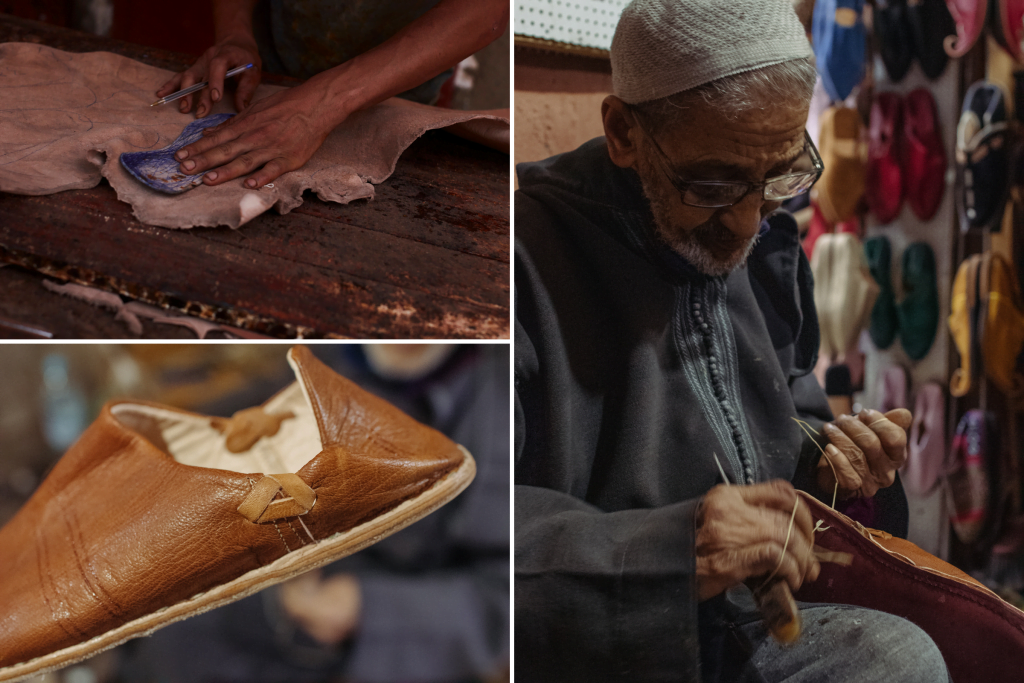
The Story of Babouche
Embroidered, pom-pommed or sequinned, plain, leather or suede, babouche slippers are synonymous with Morocco – and their kaleidoscopic colours are a staple of the souks.
But this is also a shoe steeped in centuries of fascinating history.
The French word ‘babouche’ has its origins in Arabic ‘babush’ and Persian word ‘papus’ – pa means foot and pus means cover – and evidence of their use stretches back as far as the second century BC.
The slippers then became popular everywhere from the Ottoman empire to the seventeenth century French court. In Morocco, two distinct shapes of babouches took root: the traditional pointed Arab style and the more rounded shape of Amazigh design.

Open at the heel, babouches are typically made from cow, camel or goat hide. While they can be factory-produced, hand-stitched babouches are made using traditional techniques by leather artisans and dyed using natural pigments. While plain styles are favored for day to day, intricately embroidered and decorated babouches are worn for special occasions such as Eid and weddings.

By the late nineteenth and early twentieth century, babouches had become synonymous with Morocco in European minds after painters who’d travelled to North Africa featured them in the works inspired by their trips. Henri Mattisse for instance painted Zorah on the Terrace with a pair of babouches beside her after visiting Tangiers. Then in the 1960s, the shoes also became synonymous with bohemian taste makers who adopted the style. Yves Saint Laurent for instance was often photographed wearing babouches. More recently, designer labels including Celine, Dior and Gucci have made versions of the slippers.
But here in Morocco, designers are also reclaiming and reinterpeting the traditional shoe in their own ways.

Artist Hassan Hajjaj has stamped them with Louis Vuitton and Nike logos for his Andy Wahloo label. In Darija, ‘wahloo’ means nothing and Hajjaj uses the ‘nothing’ of everyday Moroccan life to transform everything from food tins to babouches into art as he examines the interplay with traditional culture and Western consumerism.
Over at Casablanca-based luxury footwear brand Zyne, Zineb Britel and Laura Pujol chose babouches as their starting point when they decided to transform traditional craftsmanship into couture fashion.
They elevated their babouches into high fashion by giving them a proper instep and sole, replacing the traditional leather upper with luxury fabrics like velvet and satin, and finishing them off with hand-crafted embellishments such as embroidery, beading and tassels. In 2019, they were recognised by Fashion Trust Arabia for their work.

If you are staying at El Fenn the souk is moments away on foot and we highly recommend taking a guided tour to visit the leather market, the tannery and see the artisans at work as they hand-stitch slippers. They handily slip to any form of luggage so our advice would be don’t leave before buying yourself a pair.


